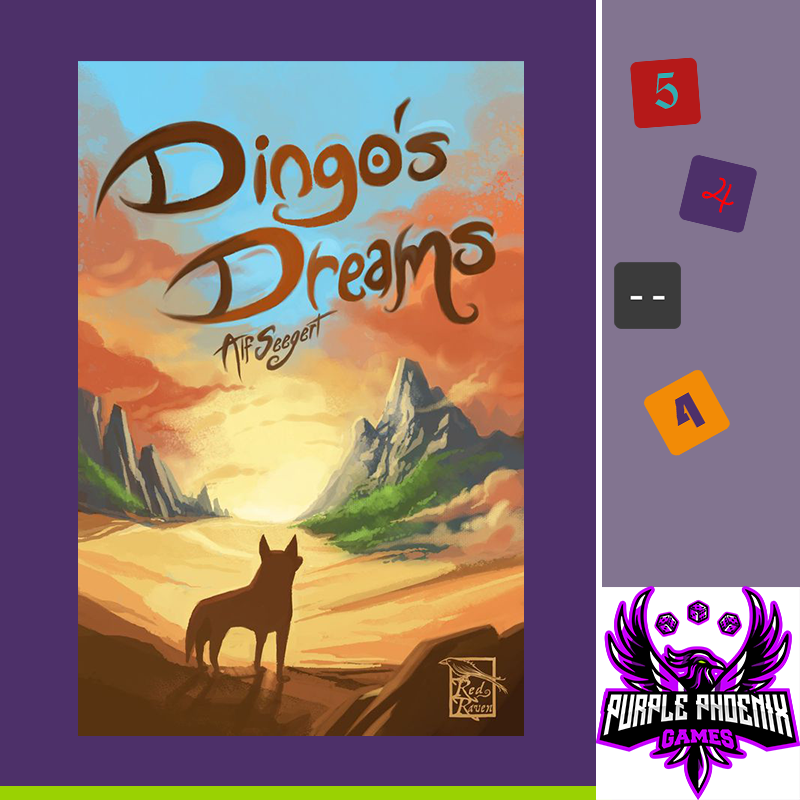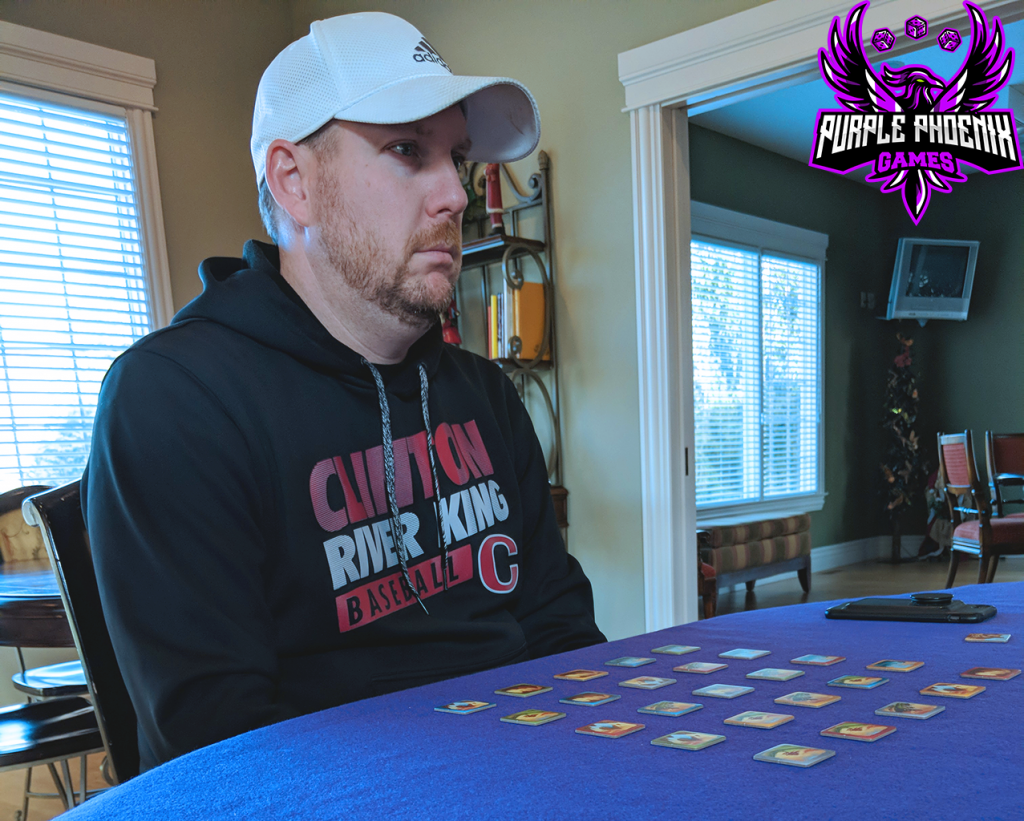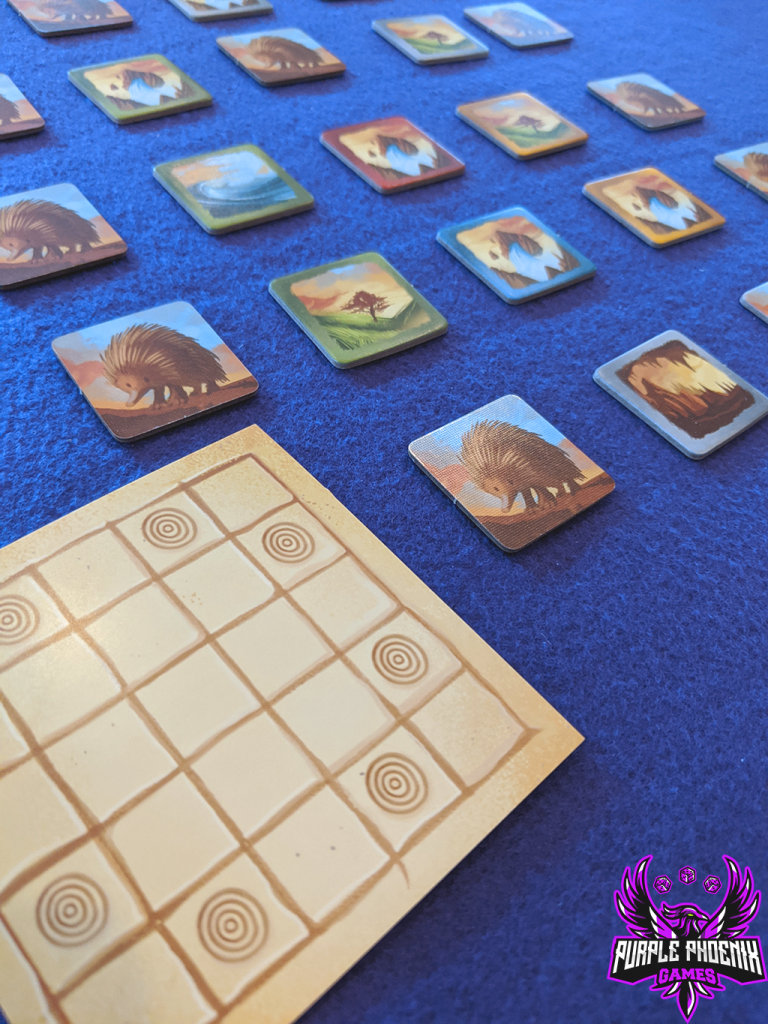
If you’re like us, you are always on the lookout for great deals on board games. Our FLGS has a Used Game Sale every year, and it is a saving grace for me (and my wallet). If I’m lucky, I’ll find an OOP game that’s been on my wishlist forever, or I’ll find a game that may be new to me even if it isn’t new to the market. And 2 years ago at that Used Game Sale is where I stumbled upon Dingo’s Dreams.
| Dingo’s Dreams | Red Raven Games |
| 2-4 Players | 20-30 minutes |
| Ages 8+ | BGG Weight – 1.13 / 5 |
In Dingo’s Dreams, the goal is to guide your spirit animal through the dream world and back home before your opponents do. How do you do that? By being the first to get your dreamscape to match the dream card pattern. To setup the game, each player takes the 25 tiles of their chosen animal, and creates a 5×5 grid in front of them. The tiles are double-sided, and the side with the animal should be face-down. There will be 1 extra tile, with the animal on both sides, which should be kept to the side. The Walkabout cards are shuffled and placed in a face-down deck, and a single dream card is revealed. Each turn of the game has 2 phases: Walkabout and Dreamtime. In the Walkabout phase, a card is revealed from the Walkabout deck and all players find the corresponding tile in their grid and flip it over so the animal side is face-up. In the Dreamtime phase, all players will take their extra tile and place it at the end of any row/column, thus forcing that line of tiles to shift over and push out a different tile. Play continues until one player has manipulated their grid to match that of the dream card. Once you do that, call out the name of your animal (Dingo!) and you win!

The rules and gameplay of Dingo’s Dreams are relatively simple, but how does it perform overall? It’s a pretty light game, but it does require some strategy. It takes some creative manipulation to shift your grid to victory. You have to be thinking a turn or two in advance to see if you can setup your grid for maximum benefit. That being said, the randomness of the grid setups and the Walkabout cards sometimes makes the game feel too luck-based. Yes, you do have the power to manipulate your own grid, but ultimately you are at the mercy of the cards and they can really work against you, no matter how strong your strategy is. Another drawback of Dingo’s Dreams is the lack of player interaction. This game is pretty much multi-player solitaire. Everyone is working on their own grids at the same time, and the only thing that affects you are the cards. It’s kind of a quiet and low energy game, which is not necessarily a bad thing, but it can halt the momentum of game night.
On that same note, one of the things that I do really like about Dingo’s Dreams is that it is so relaxed and simple. It makes for a great filler game and palette cleanser between some beefier games. The overall playtime is relatively short, and it can quickly be played multiple times in a row. Another great thing about Dingo’s Dreams is the option to increase the difficulty by adding Hazards. Hazards are tokens placed on certain spaces of the dream cards, and they mean that you cannot have an animal tile in that spot of your grid in order to win. It just adds another level of strategy and can up the ante around the table.

Overall, Dingo’s Dreams is a light and relaxing game that is perfect for playing between heavier games when you need a little break. Was this a good find for me at the Used Game sale? I would say so. It’s not one that I pull out at every single game night, but it’s one that I will use to introduce newer gamers to the hobby, and one that I will pull out when I just want a quiet night in. Purple Phoenix Games gives Dingo’s Dreams a fantasy-filled 13 / 18.

